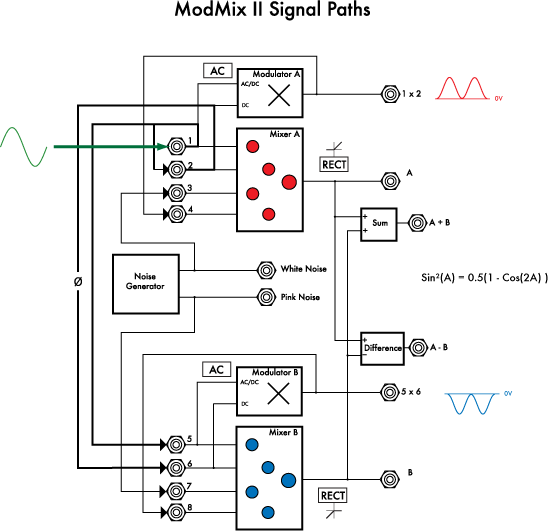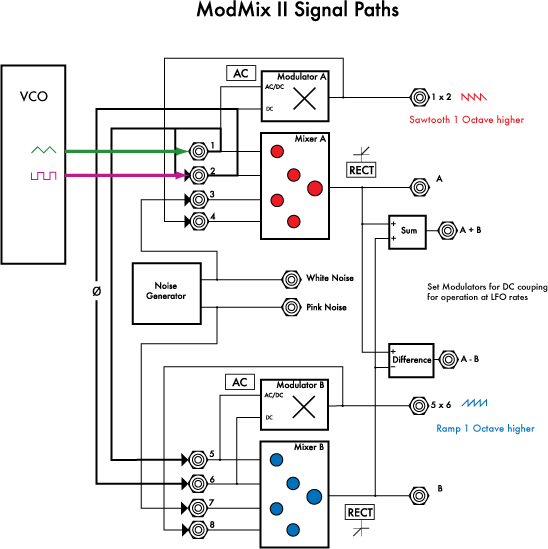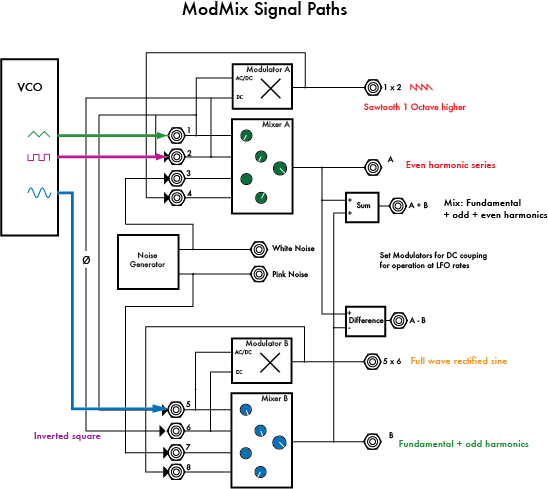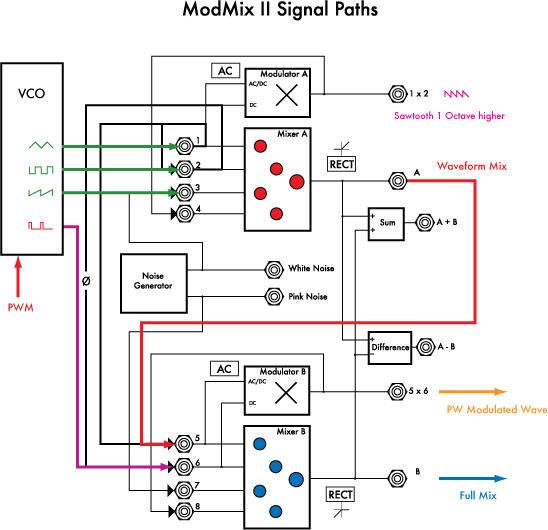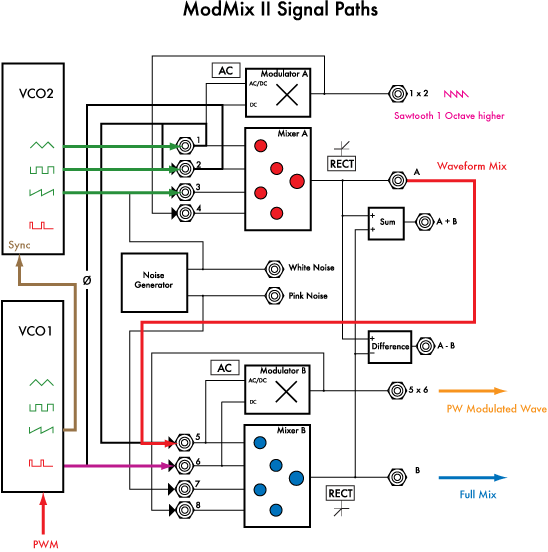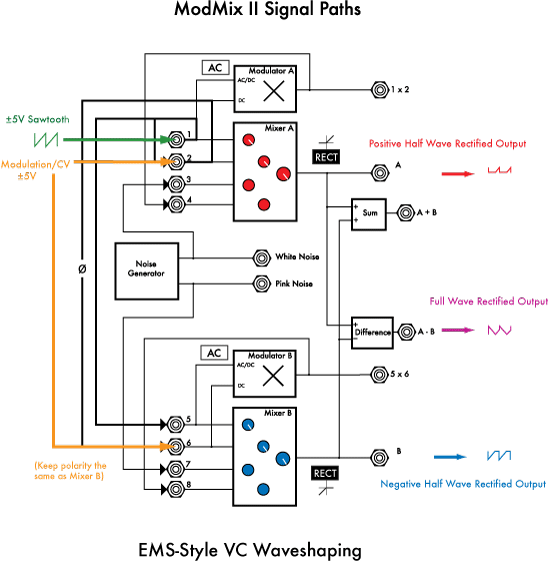 |
|
ModMix™ ApplicationsFrequency DoublingAny continuous bipolar waveform may be multiplied by itself to give a doubled frequency, discontinuous square or pulse waves will produce a DC offset and sawtooth waves produce the same frequency with altered harmonics. A sine wave will produce another sine wave an octave higher according to the trigonometry equation for squaring a sine. sin² (A) = (1 - cos (2A))/2 Normalled connections allow this patch to be made with a single patch cable. Two Squares from one ModulatorA variation of the above squaring may be patched using the factorisation of the difference of two squares: sin² (A) - sin² (B) = (sin (A) + sin (B)).(sin (A) - sin (B)) 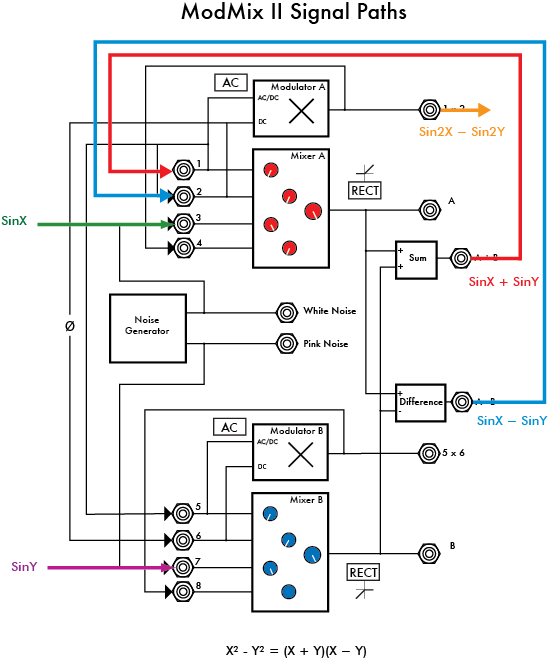 By multiplying the sum with the difference of two signals the squares of both are produced with a single multiplication. In the case of two sine inputs this will double the frequency of both with no cross products and Modulator B is free for other use. Odd & Even HarmonicsWaveforms from the same VCO may be multiplied and mixed to produce different wave shapes. A sawtooth multiplied by a square gives a triangle. A sinewave multiplied by a square gives a full wave rectified sinewave. A triangle multiplied by a square gives a sawtooth an octave higher, as a sawtooth has odd and even harmonics these become even harmonics relative to the triangle. Similarly, the square is a fundamental plus an odd harmonic series so subtracting the fundamental sinewave leaves just the odd harmonics. Shape ModulationA pulse wave may be multiplied by other waveforms from the same VCO and then width modulated. A sawtooth multiplied by a pulse gives a triangle at 50% width and changes to a positive or negative sawtooth at 0% and 100%. Complex Shape ModulationAdding another VCO synchronised to the lower frequency generating the pulse enables a rich palette of waveforms to be created and modulated. EMS-style Shape ModulationVoltage controlled shape by full wave rectifying a sawtooth with an offset which varies from sawtooth through triangle to inverted sawtooth. Centre Dead ZoneVoltage controlled shape by adding positive and negative rectified halves with a common complimentary offset. 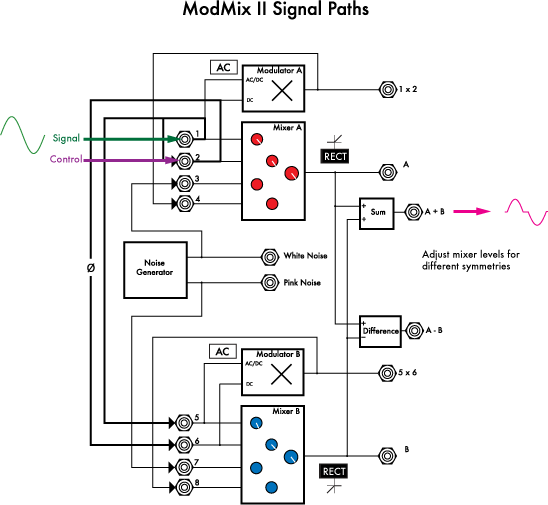 ClippingVoltage controlled limits by adding a CV offset, rectifying and then subtracting the offset to restore the DC level. 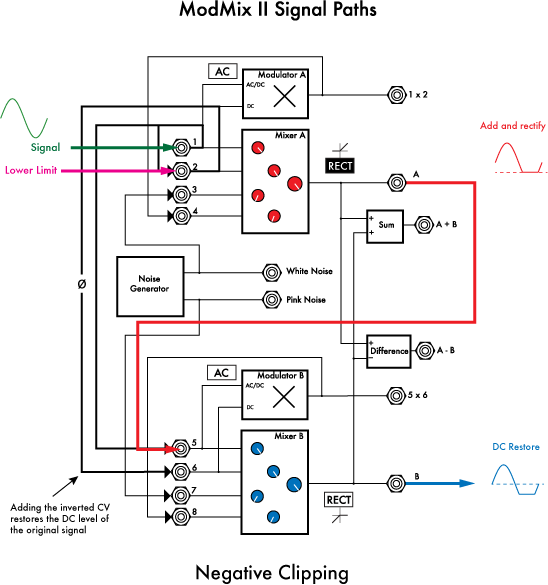 Or the reverse. 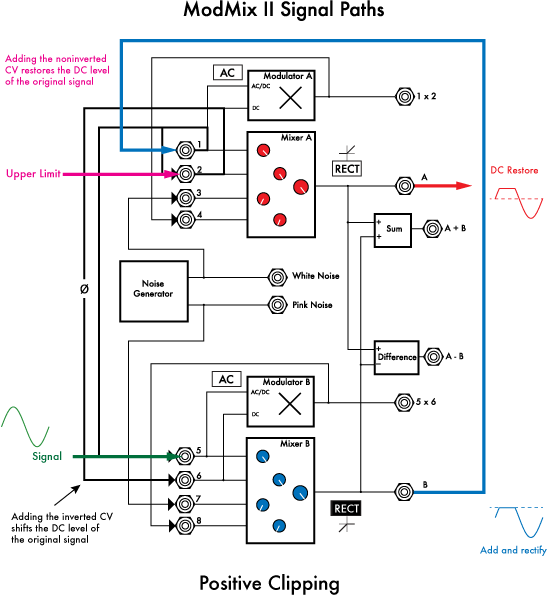 Another inverter/summer, e.g. PinMix or SwitchMix, is required to do both positive and negative clipping. LFO Modulation ProcessingLFOs with ±5V outputs require accurate reduction for control of vibrato and trills. The dual level controls provide a coarse and fine attenuation for exact pitch depths and the positive half wave rectification can be used for unipolar trills. 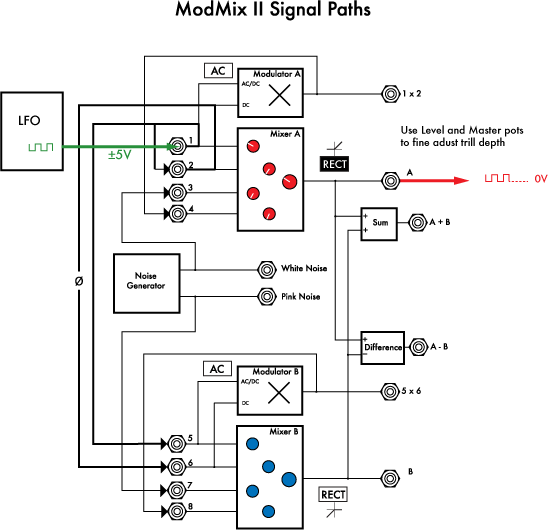 |

